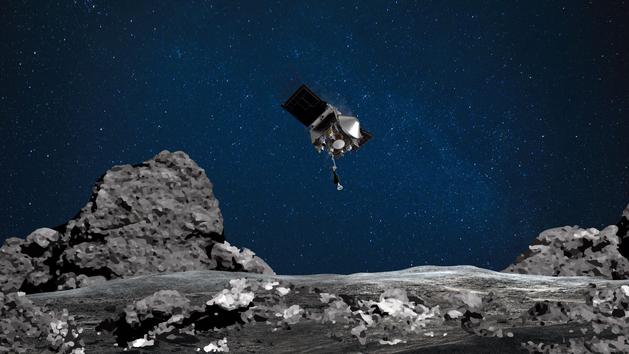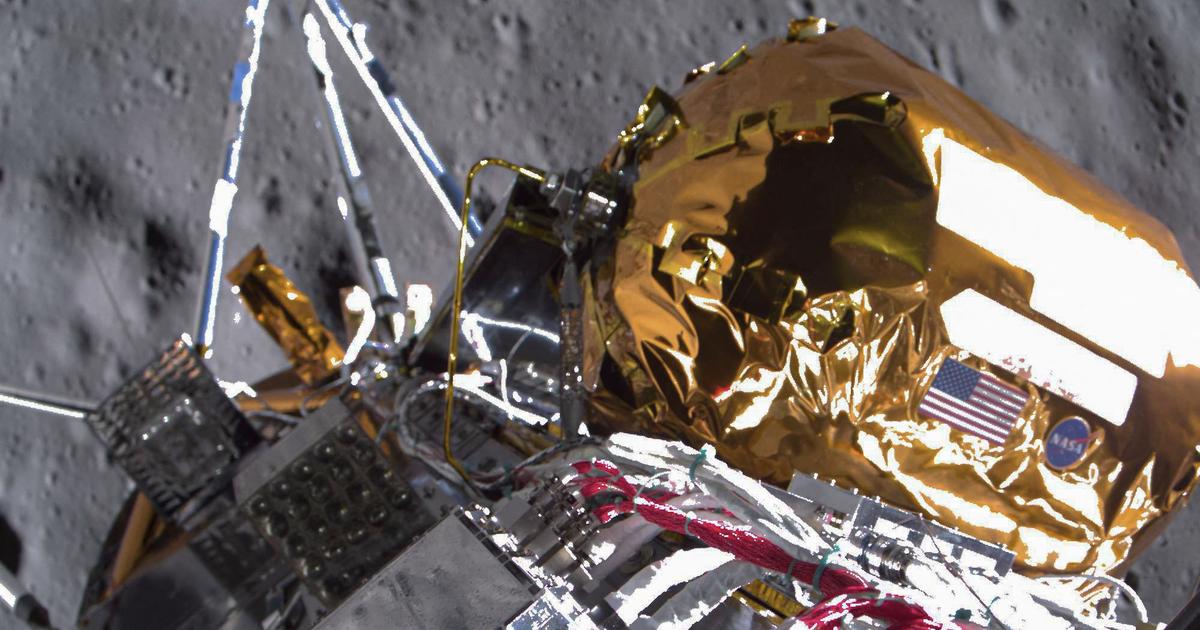After 12 years of preparations and four years of travel, the big day has arrived for the American probe Osiris-Rex: it will hit the asteroid Bennu on Tuesday in an attempt to collect a few tens of grams of dust, a high-precision operation at 330 million kilometers away from Earth.
Read also: Asteroid Bennu under the eye of Osiris-Rex
Last year, Japan managed with its Hayabusa2 probe to collect some dust from another asteroid, Ryugu, and it is on its way back.
With Osiris-Rex, NASA hopes to collect a much larger sample, at least 60 grams, which it hopes will reveal the original ingredients of the solar system.
The device, the size of a minibus, is currently in position about a kilometer from Bennu, a body 490 meters in diameter.
Engineers from NASA and Lockheed Martin sent him the final instructions on Tuesday to perform the sampling operation, which will be fully automated.
“
We cannot fly the aircraft with a joystick in real time
,” says Kenneth Getzandanner, flight operations manager.
At this distance, the signal takes 18 and a half minutes to travel from Earth to Bennu, and vice versa.
The first confirmation message for the operation will arrive on Earth at 22:12 GMT on Tuesday.
The first images will reach us on Wednesday, and we will have to wait until Saturday to find out if Osiris-Rex has managed to collect enough samples.
“
It’s not easy to navigate around such a small body
,” said Heather Enos, deputy scientific leader of the mission, to which she has devoted the past 12 years.
Twelve years for a contact of less than 16 seconds, during which an arm will collect grains of two centimeters in diameter or less, which will have been lifted by a blast of compressed nitrogen.
“
We can't land on Bennu, we'll just kiss the surface,
” says Beth Buck of Lockheed Martin.
Analyze the composition of asteroids in the solar system
The interest in analyzing the composition of the asteroids in the solar system is that they are made of the same materials that formed the planets.
Like a "
Rosetta Stone
", explains NASA chief scientist Thomas Zurbuchen, Bennu can "
tell the story of the Earth and the solar system for several billion years
".
The samples will return to Earth on September 24, 2023, with a planned landing in the Utah desert.
Earth-based laboratories will allow their physical and chemical characteristics to be analyzed in much more detail than any probe could do in flight, said NASA's planetary science division director Lori Glaze.
Not all samples will be analyzed immediately, like those brought back from the Moon by the Apollo astronauts, which NASA is still slowly opening up fifty years later.
“
Bennu's samples will allow future planetologists to ask questions that we don't think about today, with techniques that have yet to be invented,
” says Lori Glaze.
The risk of a last-minute cancellation is 6%, the team estimates.
Osiris-Rex will approach in three phases.
At around 5:45 p.m. GMT, it will begin its first slow movement to get to the correct side of the asteroid and to a distance of only 100 meters.
A second maneuver will turn the probe towards the surface and lower it to 50 meters.
The last maneuver will slow her down to 10 centimeters per second.
Up to 5 meters above the ground, an automatic system on board can cancel the operation if too large rocks are detected at the point of contact.
Because Bennu is not the smooth asteroid, covered with a
harmless
"
beach
" of fine sand, which NASA hoped.
After the arrival at the end of 2018, the scientists were surprised to receive photographs showing that it was covered with pebbles and rocks sometimes 30 meters high.
Read also: A mobile phone network soon to be installed on the Moon
They have since mapped the asteroid to centimeter resolution, and chosen the least risky landing site: Nightingale Crater, 25 meters wide, with a target just eight meters in diameter for the Sky Kiss.








